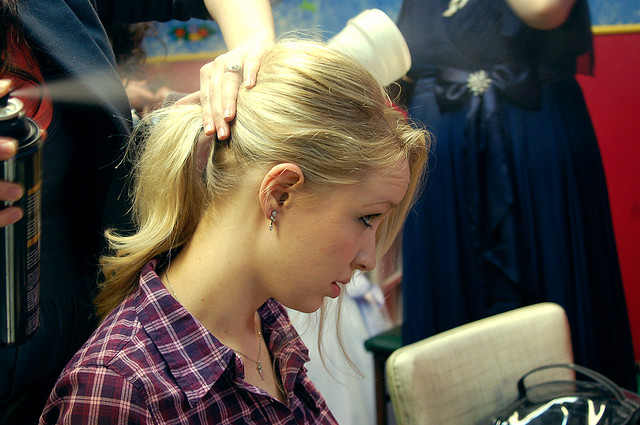
 The seventh leading cause of death in the U.S.-would you be surprised if I told you it’s diabetes?
The seventh leading cause of death in the U.S.-would you be surprised if I told you it’s diabetes?
According to the American Diabetes Association, over 25 million people in the U.S. today have the disease, with another nearly 80 million at risk, because they have prediabetes. (In prediabetes, blood sugar levels are higher than normal, but not yet high enough to be diagnosed as diabetes.)
You probably already know that many experts believe that our current obesity epidemic has a lot to do with the rise in diabetes, as being overweight is a primary risk factor for type 2 diabetes. Others include inactivity, family history, age, smoking, prediabetes, and gestational diabetes. But new research indicates that we may have been overlooking one important risk factor.
Ready for this one? It’s phthalates, those chemicals used to help products cling and to soften up plastics. You’ll find them in food contaminated by plastic packaging, as well as in perfumes, hairsprays, makeup, and fake tans. A study from Sweden found that people with “modest” levels of phthalates in their blood are twice as likely to develop diabetes.
What the Study Found
Researchers from the University of Uppsala, Sweden, analyzed data from over 1,000 people over the age of 70. In total, 119 had diabetes, while 88 had a history of the condition. After taking into accounts other factors known to cause the disease, they found that those who had higher levels of phthalates in their blood were more likely to develop insulin resistance.
The researchers couldn’t pinpoint where the phthalates might have come from, as most countries don’t require them to be listed on the label, but a spokesperson from the Campaign for Safe Cosmetics noted that phthalates are found in 70 percent of fragrance-containing personal care products-everything from perfume and cologne to shampoos and deodorants.
Monica Lind, associate professor of environmental medicine at the Section for Occupational and Environmental Medicine, Uppsala University, noted that the study does not prove that phthalates cause diabetes, but said, “Although our results need to be confirmed in more studies, they do support the hypothesis that certain environmental chemicals can contribute to the development of diabetes.”
Phthalates are Hormone-Disruptors
Lind also added that other studies have linked the phthalates to obesity. “Those pollutants containing phthalates are making people obese and now we find they could get diabetes,” she said. “These products need to be tested.”
The researchers also noted that phthalates were linked to hormone disruption. I’ve posted about this before-the fact that colognes and other scented products that contain phthalates have the ability to interfere with hormonal function, potentially interfering with male reproductive development and function and female sexual development. Now researchers theorize that it may also be interfering with insulin, which is the hormone that regulates blood sugar.
Reduce Your Exposure to Phthalates
How can you reduce your exposure to phthalates? It’s difficult to get rid of them completely, as they’re everywhere in our world today. Here’s a list of things that may contain these chemicals:
- Some toys
- Vinyl flooring and wall coverings
- Detergents
- Lubricating oils
- Food packaging
- Pharmaceuticals
- Nail polish
- Hair sprays
- Shampoos
- Makeup
- Fake tanning products
- Perfumes and colognes
- Any scented personal care products
- Air fresheners and scented candles
To take steps to cut down on the phthalates in your life, avoid products that contain these ingredients on the label:
- Mono-methyl phthalates (MMP)
- Mono-ethyl phthalate (MEP)
- Mono-isobutyl phthalate (MiBP)
- Dimethylphthalate (DMP)
- Diethyl phthalate (DEP)
- Di-isobutyl phthalate (DiBP)
In addition, take these steps to increase your odds of choosing phthalate-free products:
- Avoid products that list “fragrance” on the label-these most likely have phthalates. Choose fragrance free instead, and shop from conscientious manufacturers that make a point of using fewer chemicals.
- Choose plastics with recycling numbers 1, 2, or 5. Codes 3 and 7 are more likely to contain phthalates.
- Try to avoid vinyl-choose cloth or hemp shower curtains and linoleum flooring.
- Avoid nail polish, or find those that are phthalate-free.
- Avoid air freshener and chemically scented candles. Try potpourri, an open window, or soy- or beeswax candles scented with essential oils.
- Limit your use of hairspray. At the very use, don’t inhale it.
- Don’t let your children chew on anything plastic that’s not labeled BPA- and phthalate-free.
And finally, to reduce your risk of diabetes, try to maintain a healthy weight, do some exercise every day, and eat a healthy, low-fat diet.
What do you think of this study? Have you tried to cut back on phthalates in your life?
Photo courtesy Wowirus via Flickr.com.
Sources
Sadie Whitelocks, “Chemical in Fake Tan and Makeup is Linked to Obesity and Diabetes,” Daily Mail, April 13, 2012, http://www.dailymail.co.uk/health/article-2129195/Chemical-fake-tan-linked-obesity-diabetes.html.
Rebecca Smith, “Chemicals in Make-up and Plastics Linked to Diabetes: Research,” The Telegraph, April 13, 2012, http://www.telegraph.co.uk/health/healthnews/9200373/Chemicals-in-make-up-and-plastics-linked-to-diabetes-research.html.
“Chemicals in Plastics, Make-up Latest Cause of Diabetes,” The Times of India, April 13, 2012, http://articles.timesofindia.indiatimes.com/2012-04-13/science/31337114_1_diabetes-care-obesity-plastics.

